
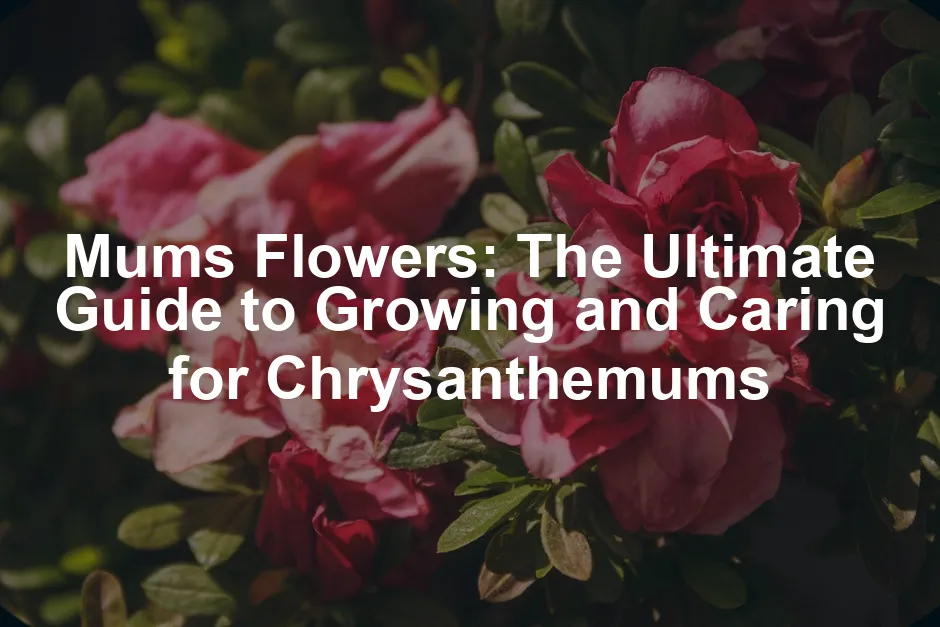
Mums Flowers: The Ultimate Guide to Growing and Caring for Chrysanthemums
Introduction
Chrysanthemums, often called mums, are stunning flowers. They bring vibrant colors to fall gardens, making them popular. Mums are celebrated for their beauty and significance in various cultures. From symbolizing life in Asia to respect in America, these flowers hold a special place in our hearts.
If you’re ready to add a splash of color to your garden, consider starting with Chrysanthemum Seeds – Mixed Colors. These seeds are a fantastic way to get started, and they’ll bring a vibrant array of hues to your garden!
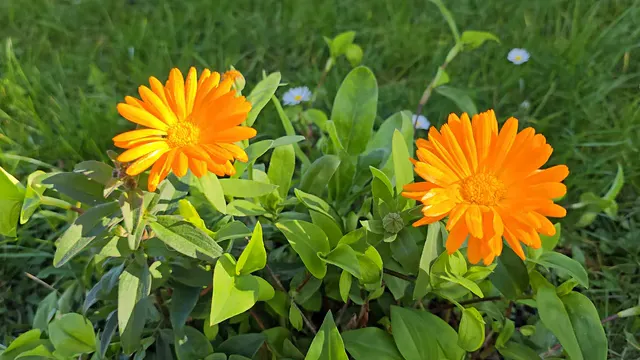
Summary and Overview
Chrysanthemums come in two main types: garden mums and florist mums. Garden mums are hardy and thrive outdoors, often returning year after year. Florist mums, however, are typically larger and intended for indoor arrangements.
Historically, these flowers trace back to ancient China, where they were cultivated for their beauty. Today, there are over 20,000 varieties worldwide, showcasing a spectrum of colors and shapes. Mums are versatile, fitting perfectly in gardens, containers, and autumn displays.
Culturally, chrysanthemums symbolize different meanings globally. In Japan, they represent nobility and longevity. In Europe, they often signify death and are used in memorials. Thus, these flowers not only beautify our surroundings but also connect us to rich traditions and meanings.

Understanding Mums Flowers
Types of Mums
Mums come in two primary types: garden mums and florist mums. Garden mums thrive outdoors and are hardy perennials. They often return each year, making them a favorite for fall gardens. In contrast, florist mums are typically larger and grown for indoor arrangements. These blooms are not as hardy and usually last just a season.
When looking at common chrysanthemum varieties, you’ll find a vibrant array of colors. Mums bloom in shades like white, yellow, orange, red, and purple. The flowers can take various shapes, including pompons, spiders, and daisies. Interestingly, there are over 20,000 known cultivars and hybrids of mums around the globe!
Understanding hardiness zones is crucial when choosing your plants. Most garden mums flourish in USDA zones 5-9. Be sure to check local nurseries for diverse mum varieties to enhance your garden’s autumn palette.
Growing Mums
Ideal Growing Conditions
To grow vibrant mums, pay attention to soil, sunlight, and watering. Mums prefer well-drained soil with a pH of 6.0 to 6.5. Rich, organic matter is key, and amending heavy clay soils can improve drainage. For more information on soil pH testing and adjustment, check out our guide on soil pH testing and adjustment for optimal plant growth.
Want to ensure your soil is just right? A Soil Testing Kit for pH Levels can help you determine the exact needs of your garden! It’s like a little science experiment for your plants!
Understanding soil pH is essential for growing healthy mums. Learn more about soil pH testing and adjustment.
Sunlight exposure is vital. Mums need about six hours of direct sunlight daily to thrive. Without enough light, blooming may decline. Watering is also essential; these plants prefer consistently moist soil but avoid soaking.
Proper spacing between plants promotes air circulation and prevents disease. For best results, aim for a distance of 18 inches apart. If you want a successful mum garden, consider downloading a planting guide for detailed instructions and tips.
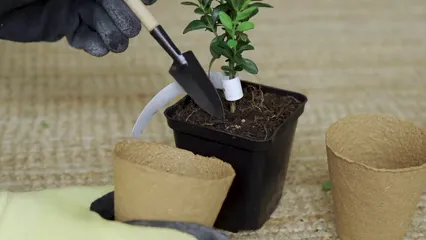
Planting Techniques
Planting chrysanthemums, or mums, effectively ensures a vibrant display. Start by selecting a well-drained location that receives at least six hours of sunlight daily. For optimal growth, aim to plant in early spring or six weeks before the first frost in fall.
1. Prepare the Soil: Enrich your soil with organic compost to improve nutrients. This will boost root health and overall growth. If you’re looking for a great option, check out this Organic All-Purpose Fertilizer that will make your soil sing!
2. Planting Depth: Dig a hole that’s slightly deeper than the pot. Place the mum in the hole, ensuring the top of the root ball is level with the soil surface.
3. Root Care: Gently spread the roots before backfilling the hole. Press down lightly to eliminate air pockets.
4. Mulching: After planting, apply a layer of Mulch Mats for Plants around the base. This helps retain moisture and regulates soil temperature.
Timing is crucial. In warmer climates, plant in early fall. In cooler areas, early spring is best. With the right care, your mums will thrive and bring color to your garden.
Want to stay organized? Sign up for a seasonal gardening checklist to keep track of all your planting tasks!

Watering and Fertilization
Mums require careful attention to watering and fertilization for optimal growth. Aim to water them thoroughly once a week, ensuring the soil remains consistently moist. During hot spells, you might need to water daily.
Use a balanced fertilizer every 4-6 weeks during the growing season. This promotes healthy blooms and strong roots. Look for fertilizers rich in phosphorus to encourage flowering.
Watch for signs of overwatering, like yellowing leaves or wilting plants. Conversely, underwatering can cause browning and drooping. Mums need about 1 inch of water weekly, adjusting for rainfall.
For a thriving mum garden, join our newsletter for watering tips and reminders. Your blooms will thank you!
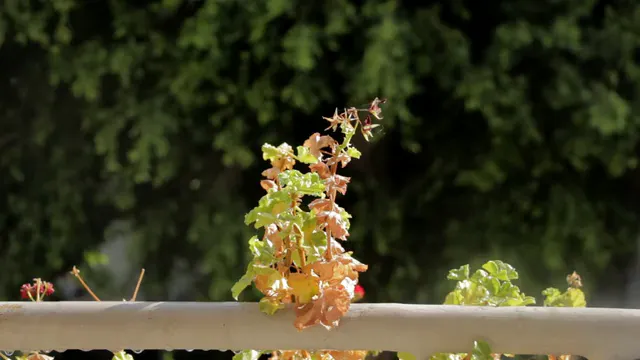
Pest and Disease Management
Mums can attract several pests and diseases that threaten their health. One common pest is aphids. These tiny insects suck sap from the leaves, causing stunted growth and curled leaves. Surprisingly, about 30% of gardeners report issues with aphids on their mums.
Another prevalent problem is powdery mildew, a fungal disease that appears as white, powdery spots on leaves. This can lead to reduced blooming and overall plant vigor. Leaf spot is another concern, causing dark brown spots that can spread if not managed promptly.
To prevent these issues, maintain good air circulation by spacing plants adequately. Water at the base to keep foliage dry, which helps prevent fungal infections. If you spot any problems, consider using insecticidal soap spray or organic fungicides as treatments.
Want to learn more about keeping your mums healthy? Access our pest control guide for chrysanthemums!

Pruning and Deadheading
Proper pruning and deadheading can significantly enhance the blooming of your mums. When should you deadhead? Aim to remove spent blooms regularly throughout the growing season. This encourages the plant to produce more flowers and extends the blooming period.
For effective pruning, use sharp, clean pruning shears. Pinching back the tips of young shoots can promote bushier growth. This technique should be done when the plants reach about 6 inches tall.
Pruning not only encourages blooms but also improves air circulation, reducing the risk of diseases. Research shows that regular deadheading can increase bloom longevity by up to 50%. Interested in mastering the art of pruning? Watch our video tutorial on pruning fruit trees in winter!
Effective pruning techniques can enhance blooming in your garden. Explore best practices for pruning fruit trees in winter.

Overwintering Mums
Preparing for Winter
As the cold months approach, it’s crucial to prepare your mums for winter. Start by trimming back the foliage to about 6 inches above the ground after the first hard frost. This helps reduce stress on the plant. Next, apply a thick layer of mulch around the base. Mulch acts as insulation, keeping roots warm and protecting them from freezing temperatures.
In colder climates, overwintering techniques can significantly boost the survival rate of your mums. Research shows that mums in USDA zones 5-9 have a higher success rate when properly insulated. Consider using straw, leaves, or wood chips for mulching. You might also want to check out organic mulch to keep your plants cozy!
Regularly check for moisture during winter, especially if conditions are dry. Remember, these simple steps can make a big difference in ensuring your mums return in spring. Want to get started? Download our winter preparation checklist today!

FAQs
Are mums annuals or perennials?
Most mums are considered perennials, but many are treated as annuals due to their sensitivity to extreme weather. With proper care, some can survive and bloom again each year.
How do I keep my mums blooming longer?
To extend blooming, regularly deadhead spent flowers and ensure adequate watering. Using a balanced fertilizer can also support longer blooms.
Can mums survive winter?
Yes, with winter care strategies like mulching and proper pruning, mums can survive the colder months and thrive in spring.
Do chrysanthemums attract pests?
Yes, chrysanthemums can attract pests like aphids. However, their fragrant leaves deter some insects, making them less appealing to certain pests.
What are the best colors for fall displays?
For stunning fall displays, opt for rich colors like deep red, vibrant orange, and warm yellow. These shades create a beautiful autumn palette.
Conclusion
Chrysanthemums, or mums, bring incredible beauty to any garden. Their vibrant colors and diverse types make them a versatile choice for fall displays. By understanding their care needs, you can enjoy their blooms for many seasons. Explore different types and care methods to enhance your autumn landscapes. Adding mums not only brightens your garden but also adds life to the cooler months!
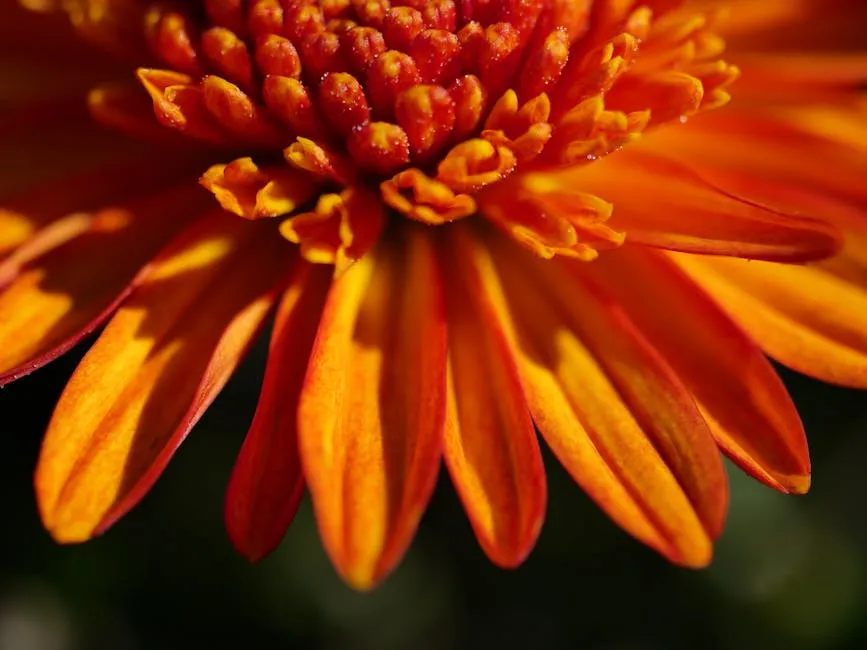
To make your garden even more delightful, consider adding decorative garden stakes to your setup! They are not just functional but can also add a whimsical touch to your garden.
Please let us know what you think about our content by leaving a comment down below!
Thank you for reading till here 🙂
All images from Pexels



